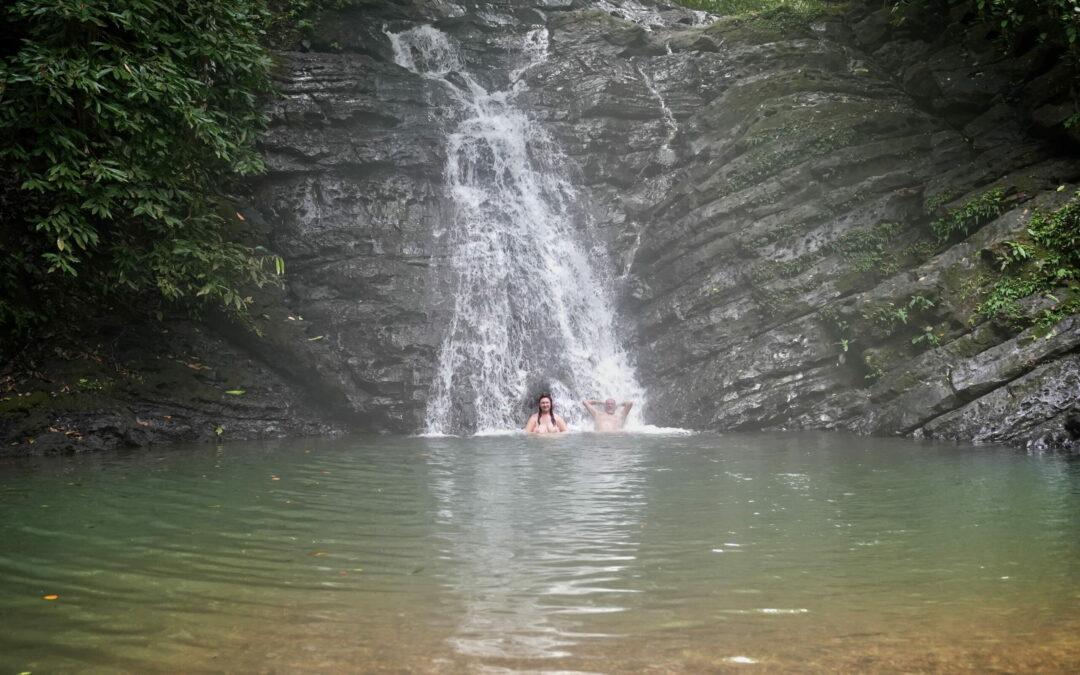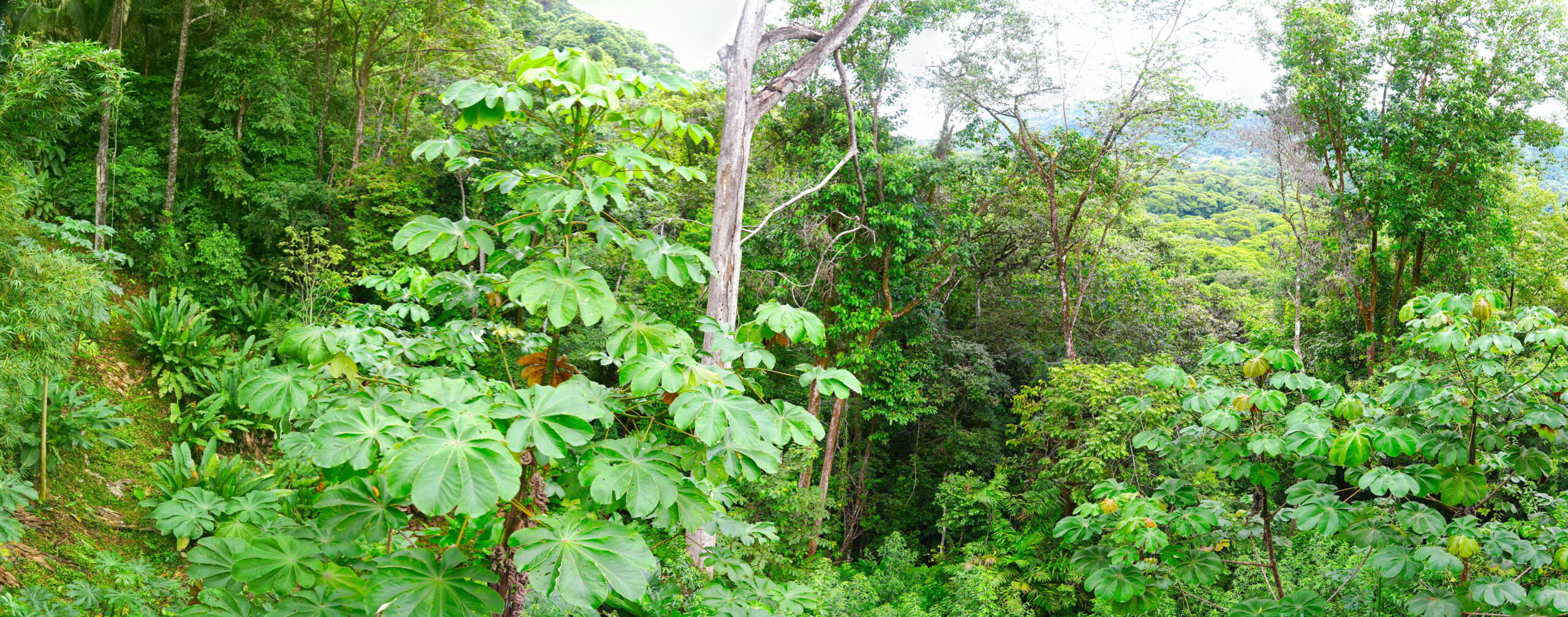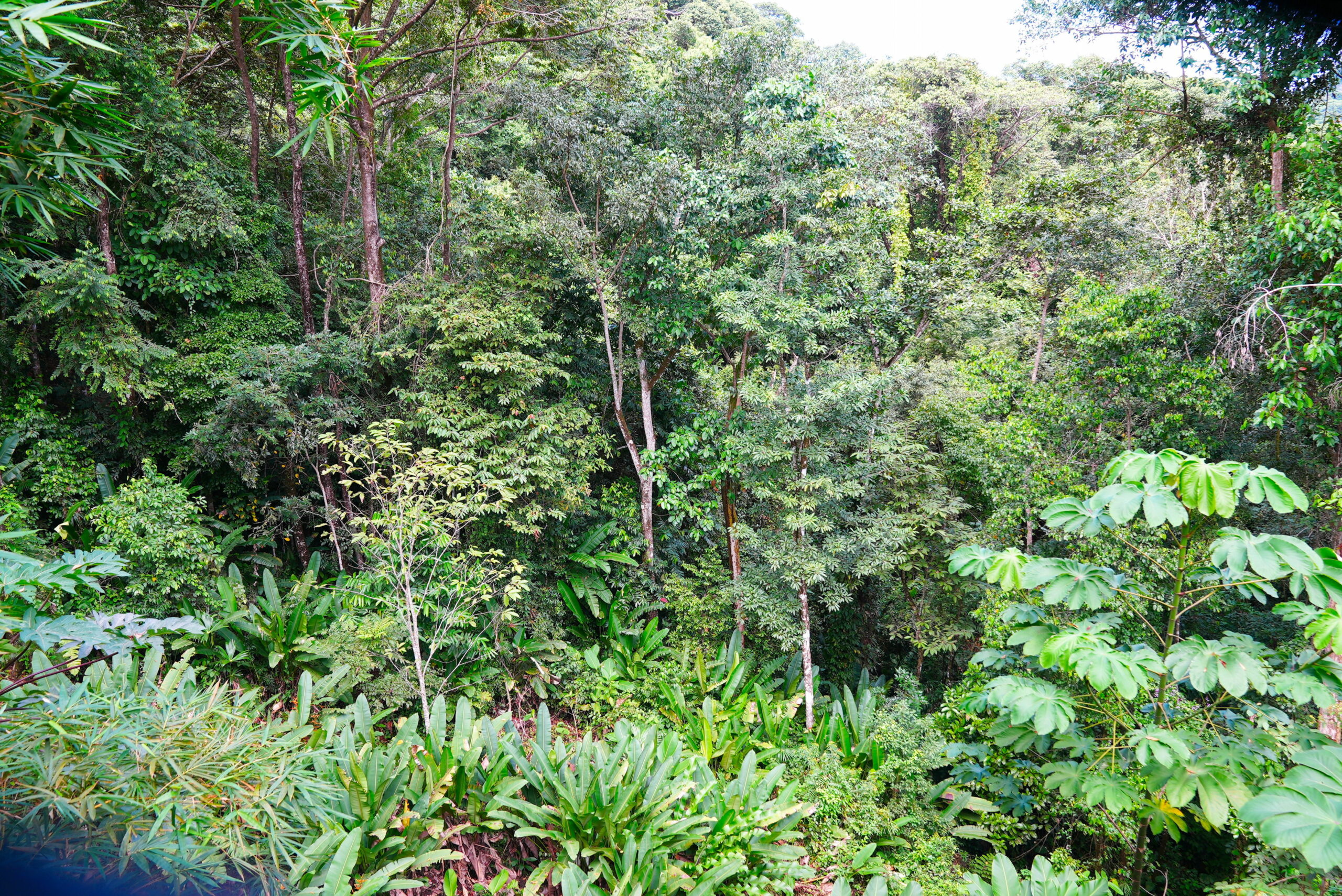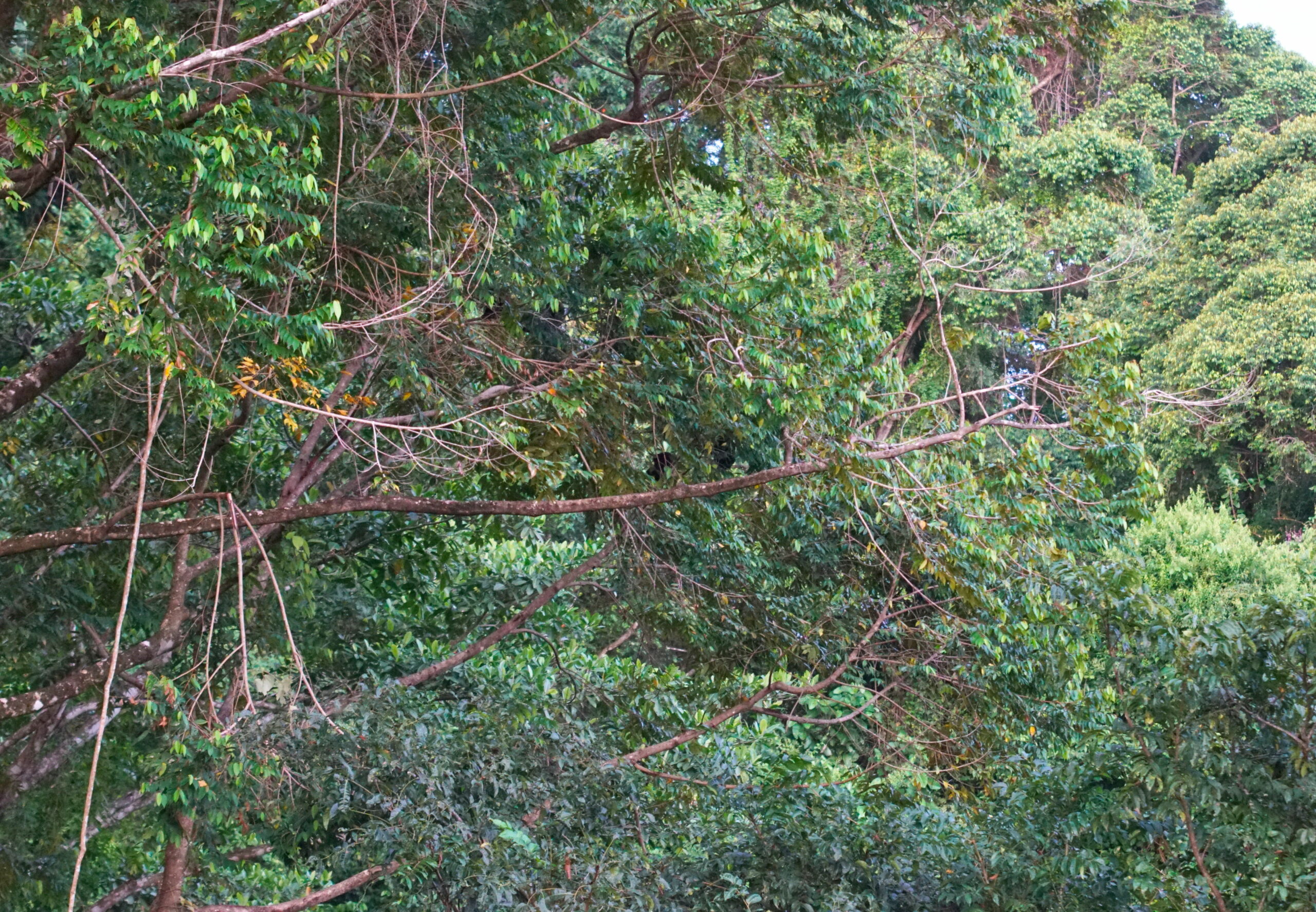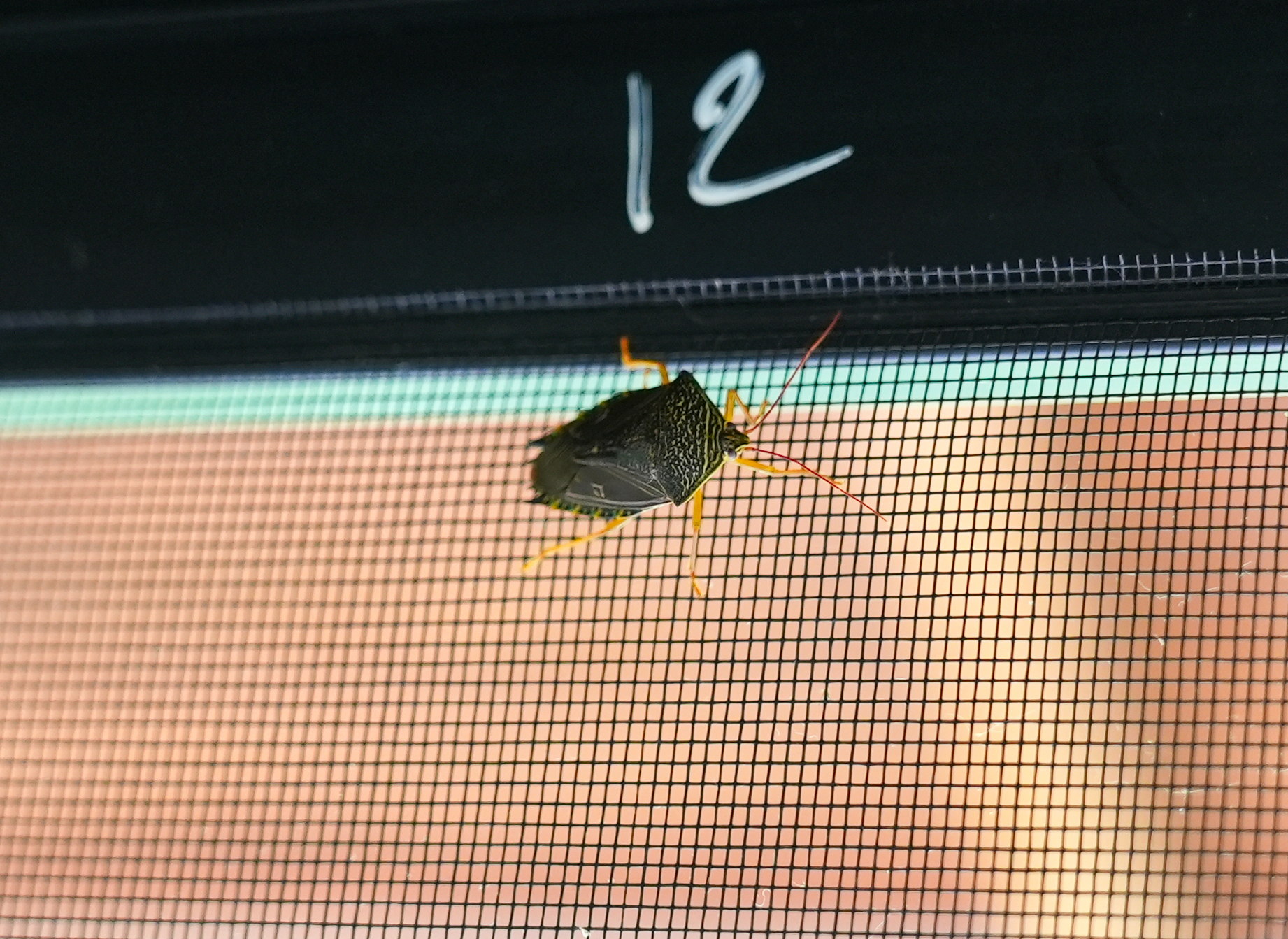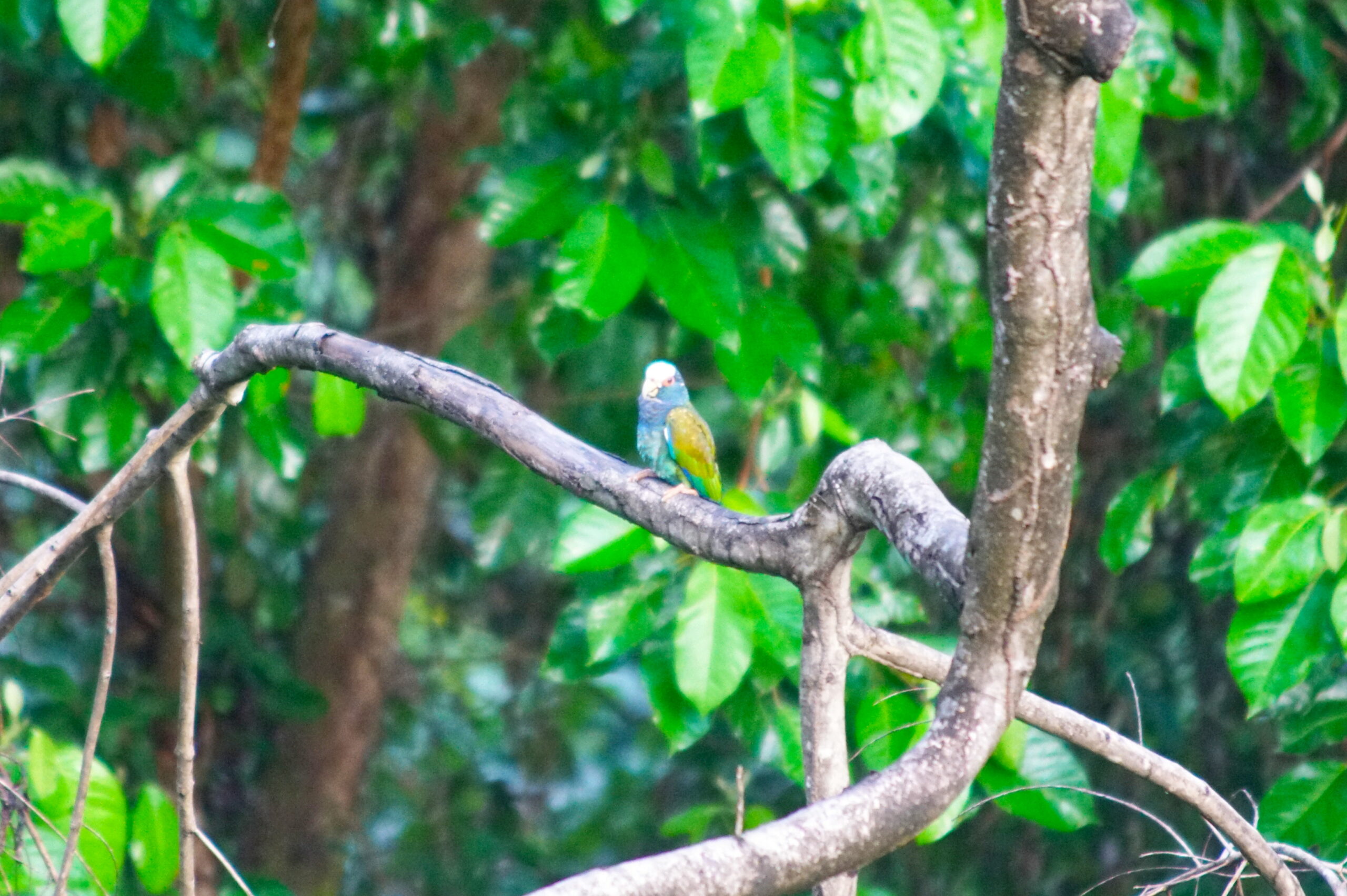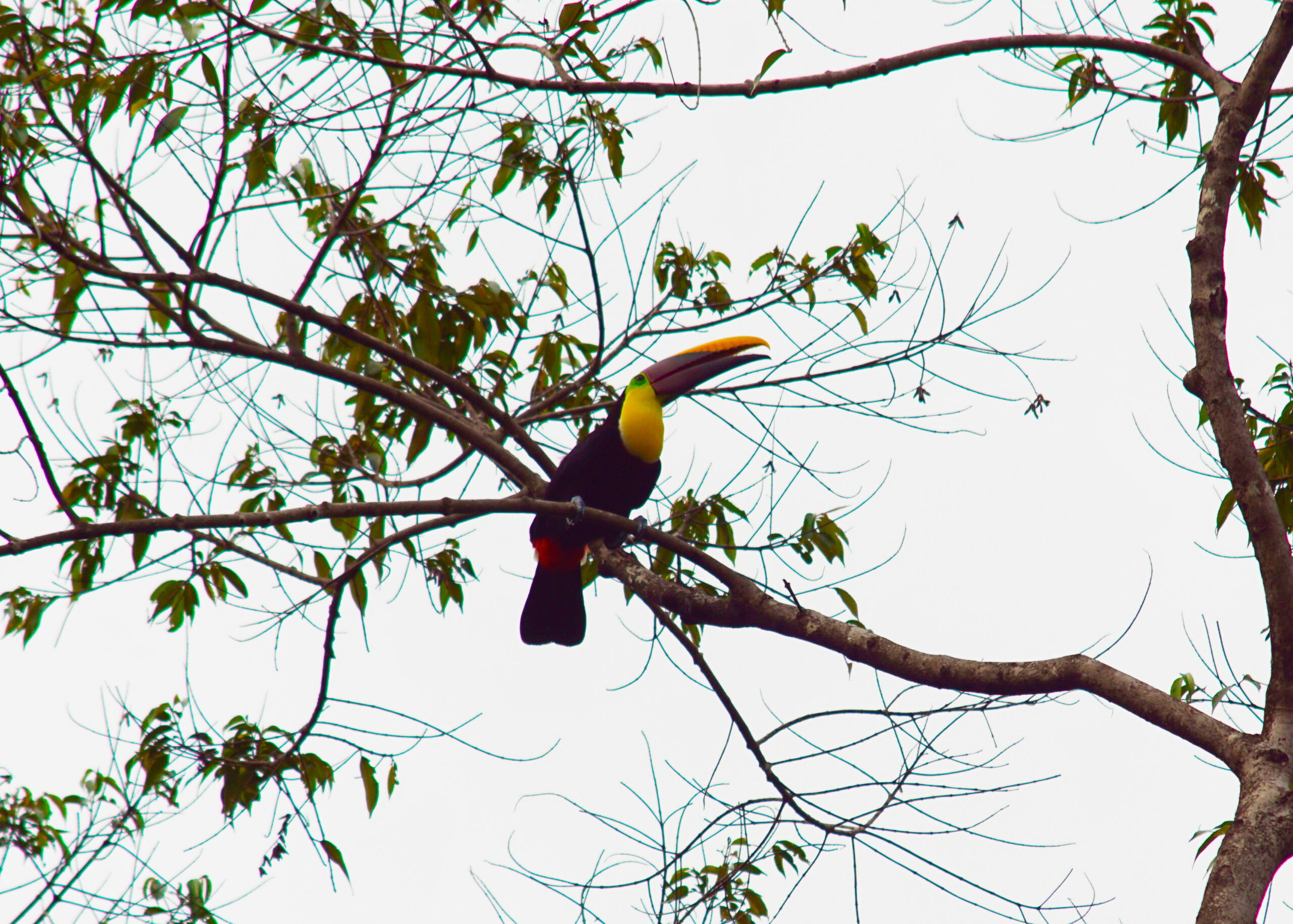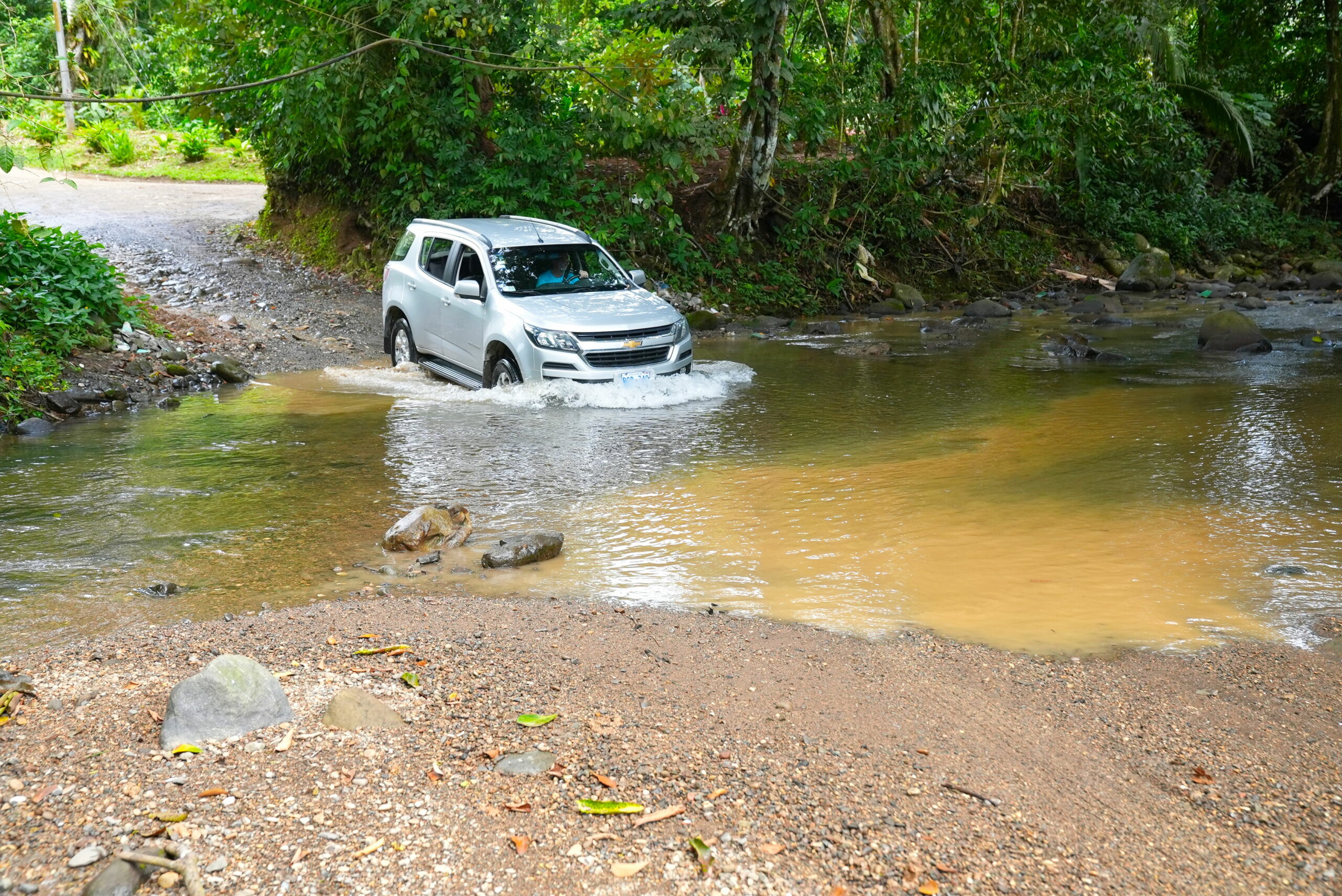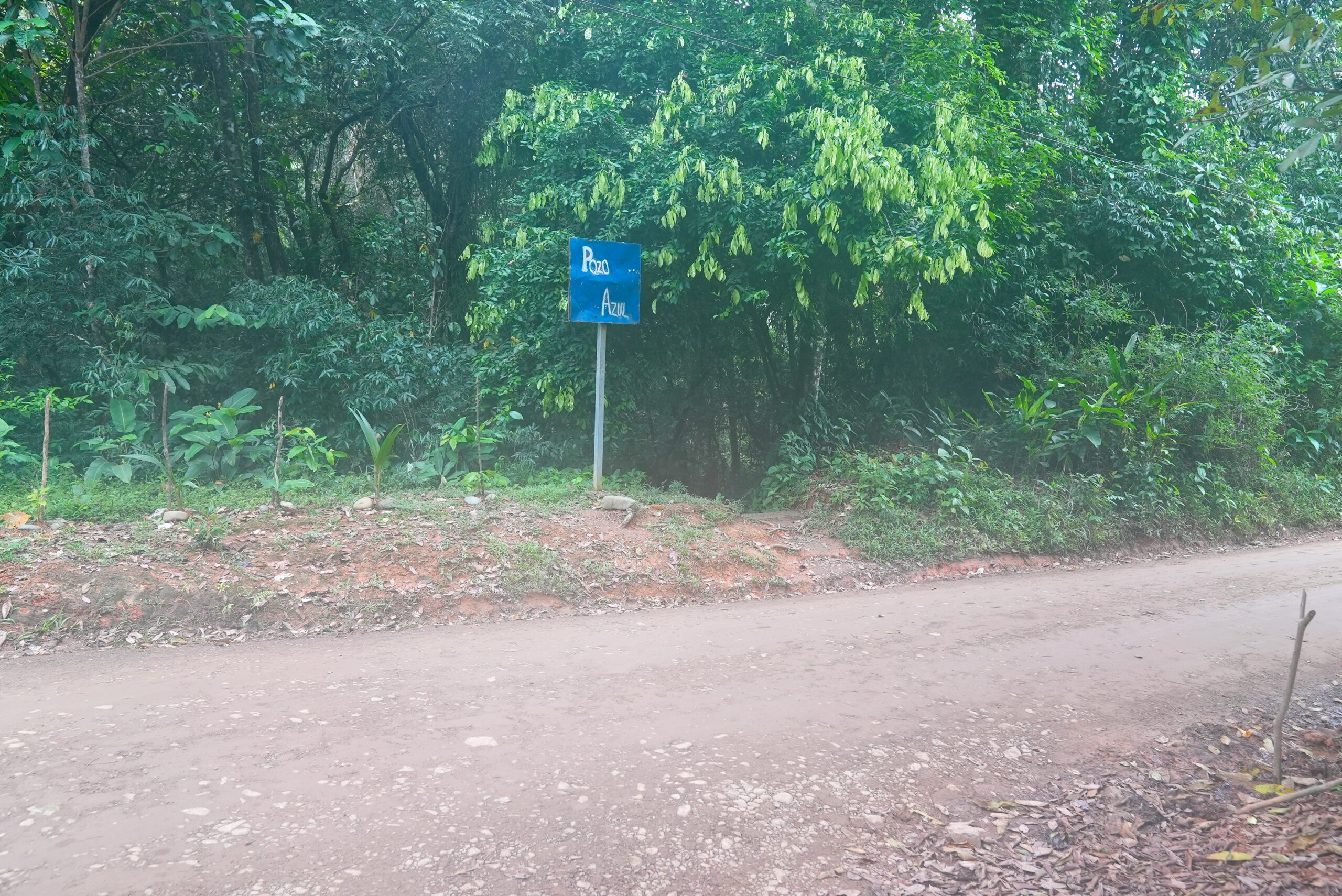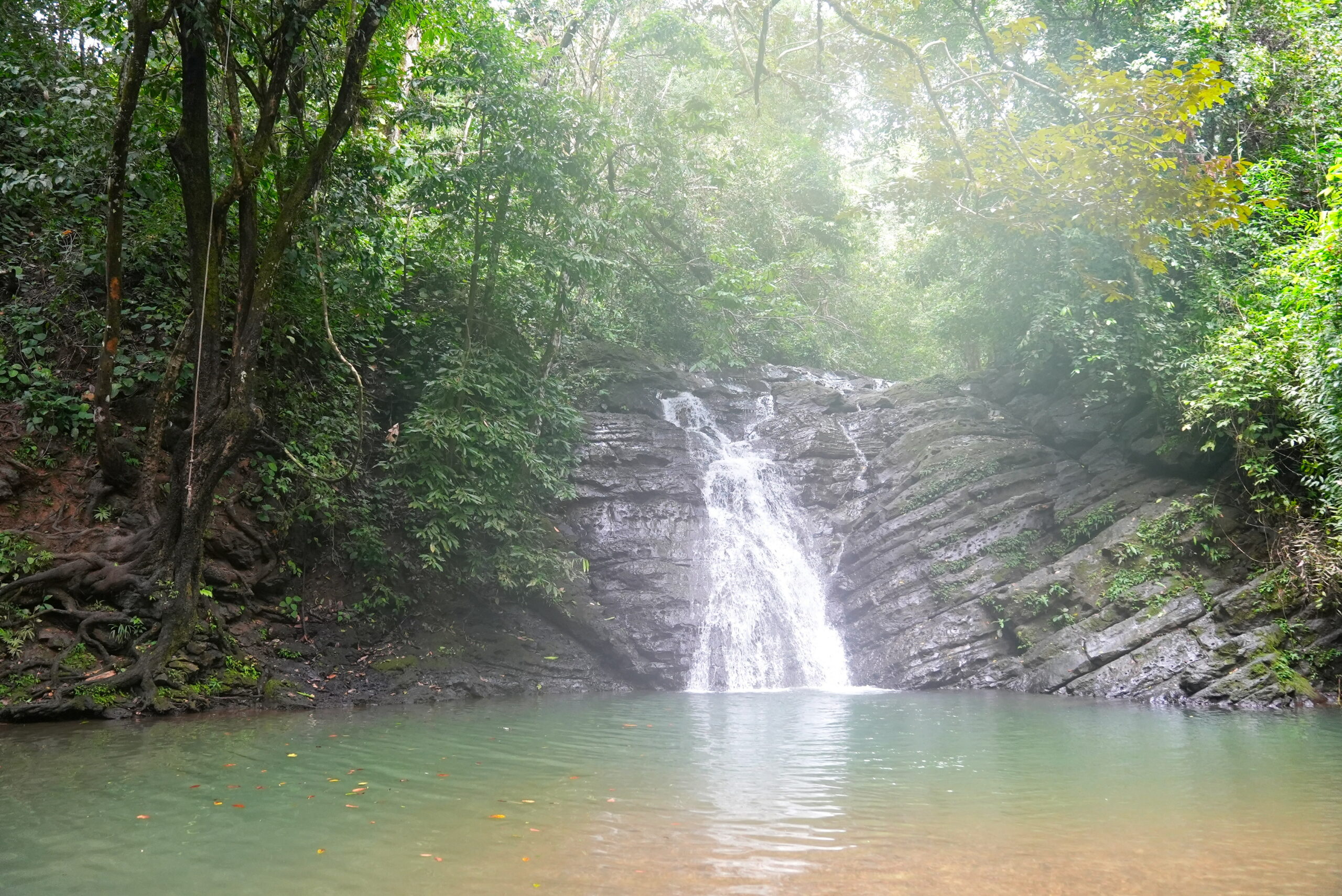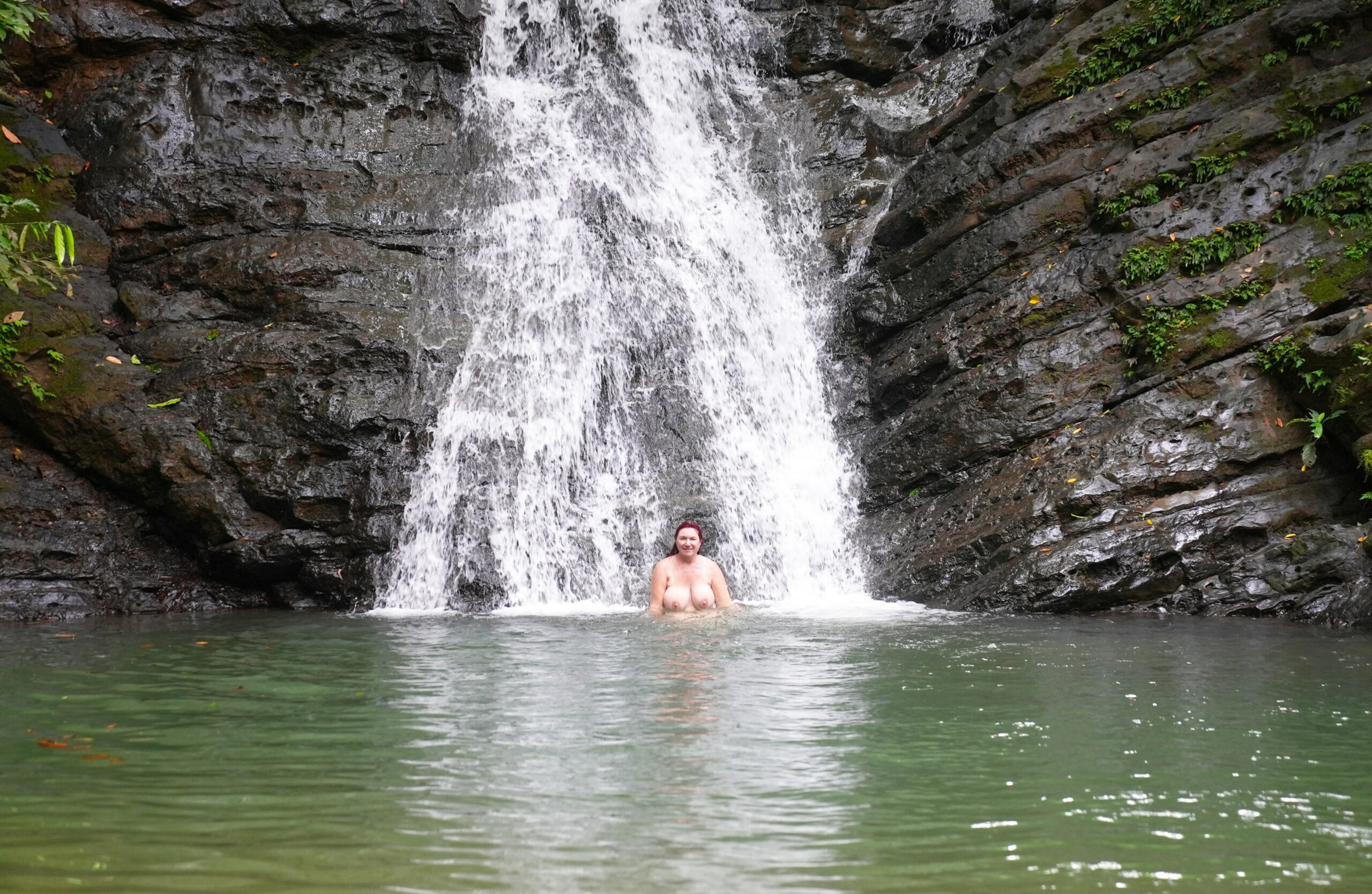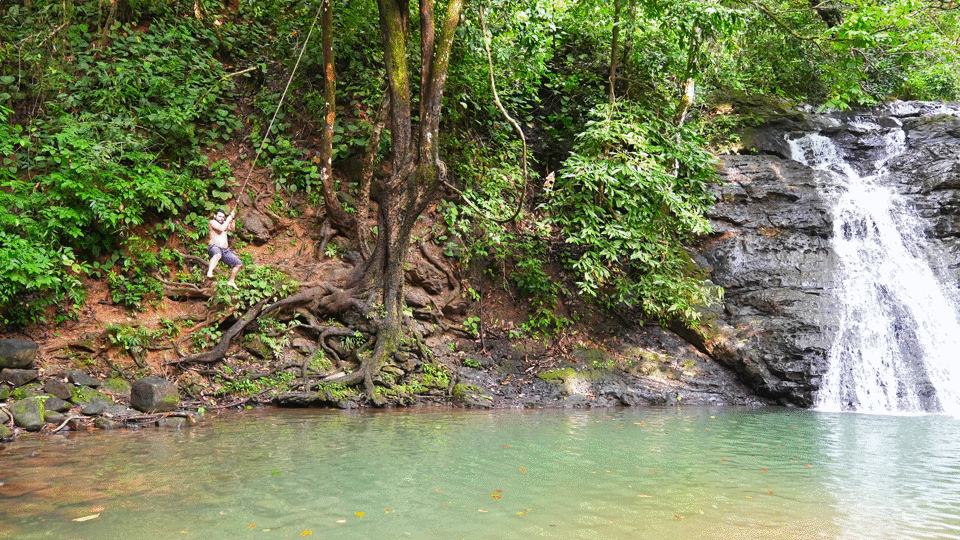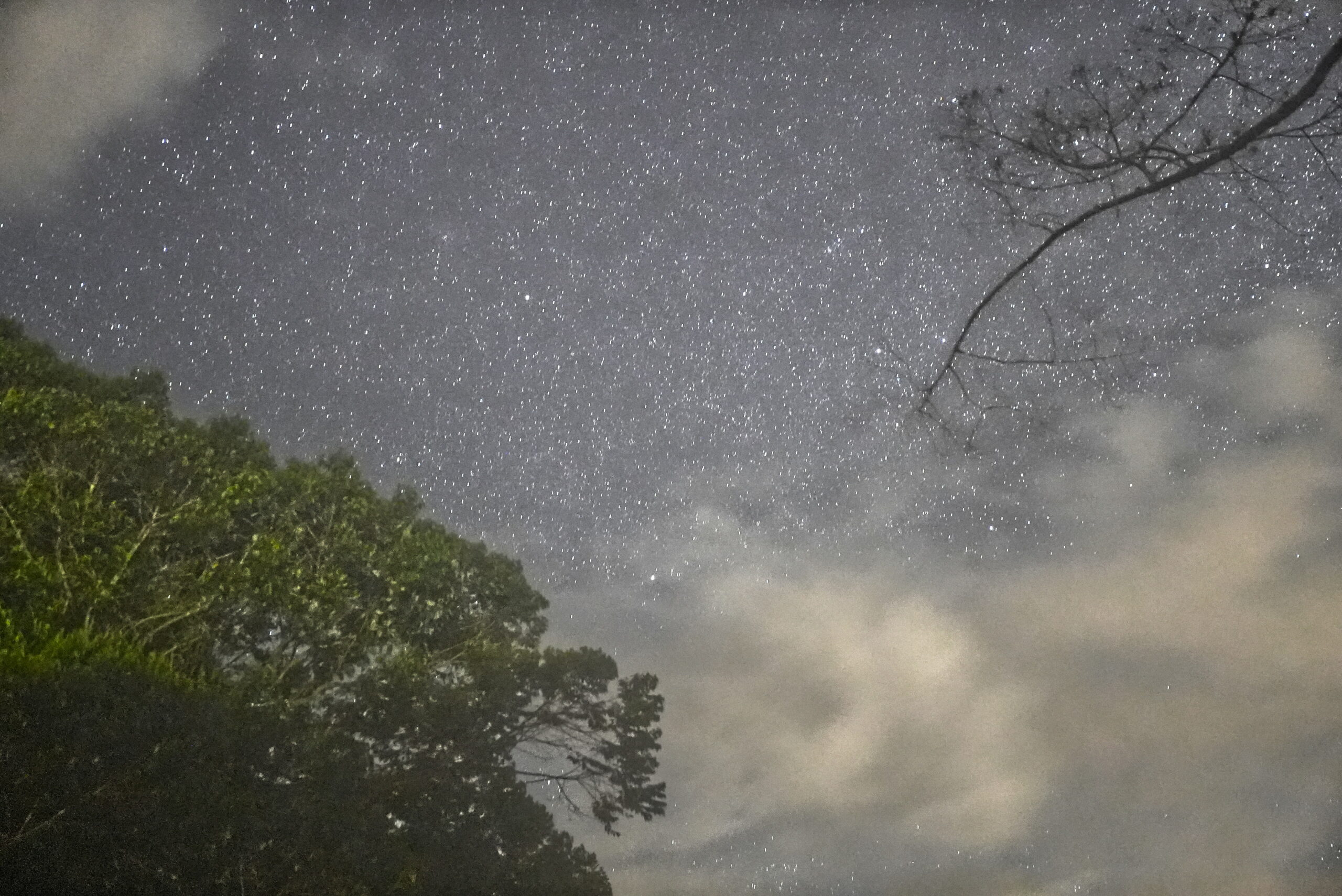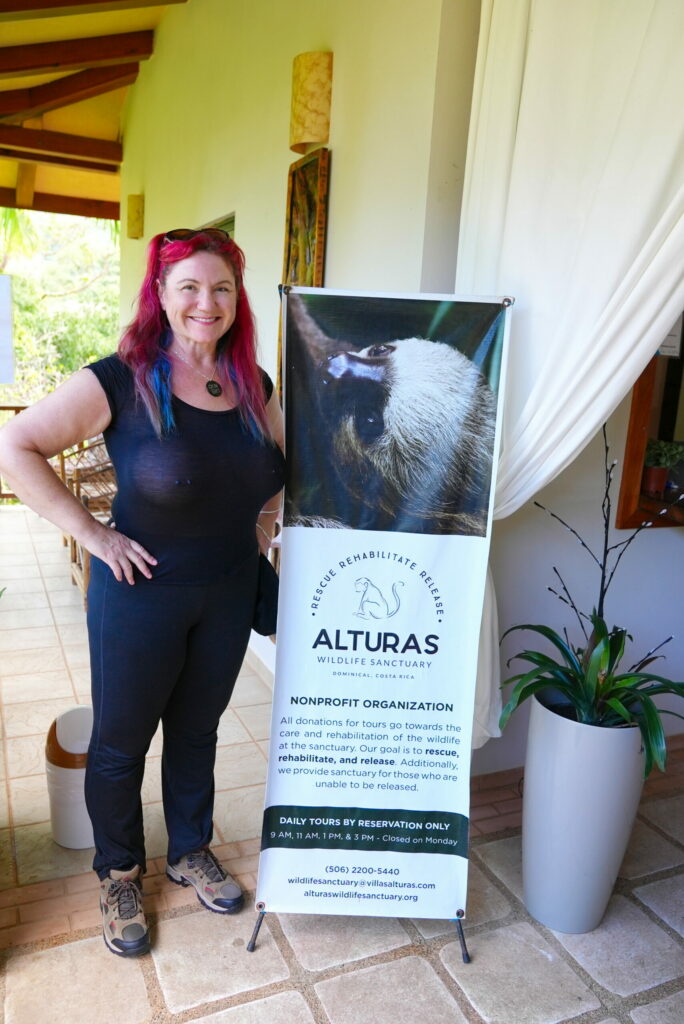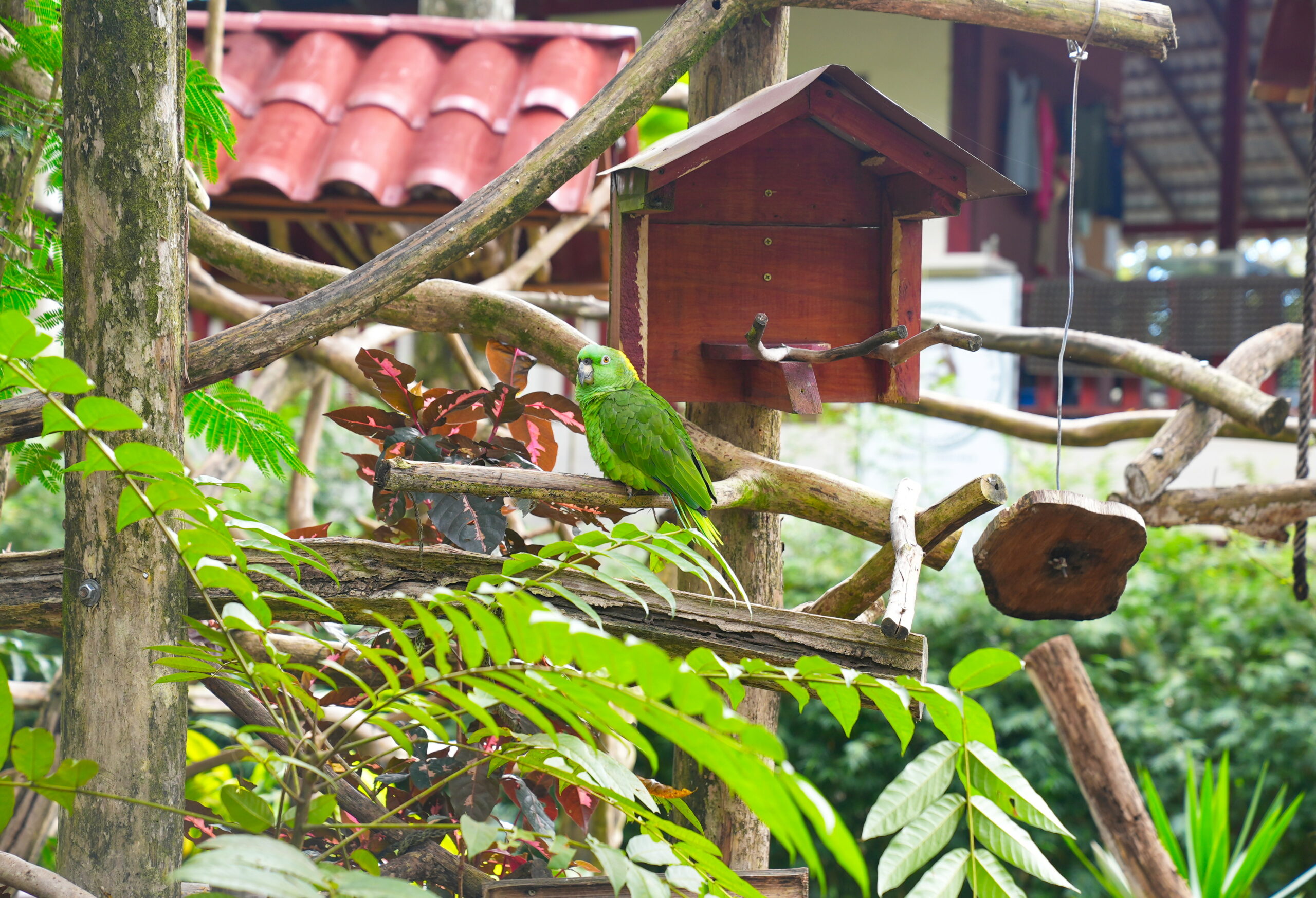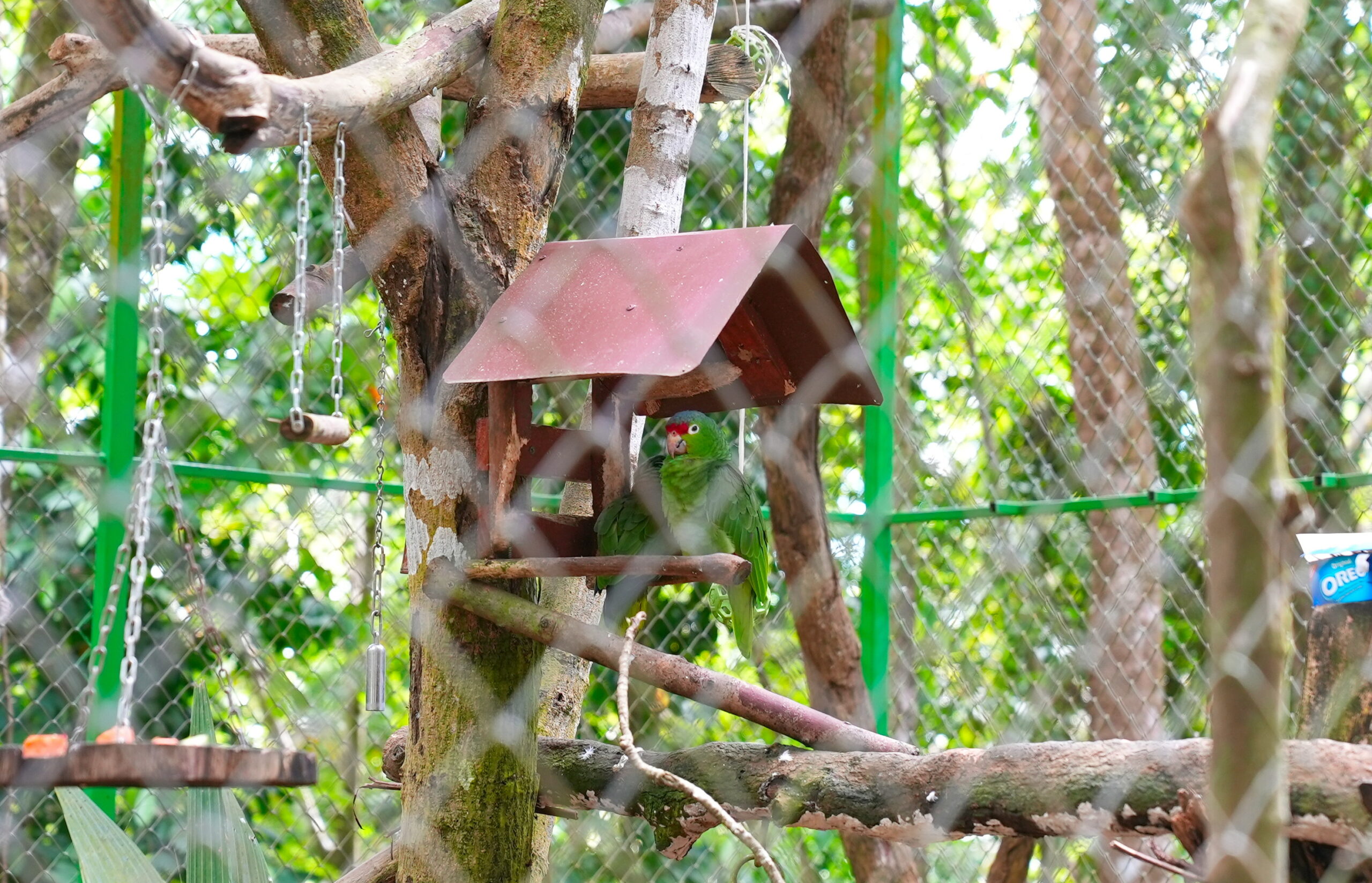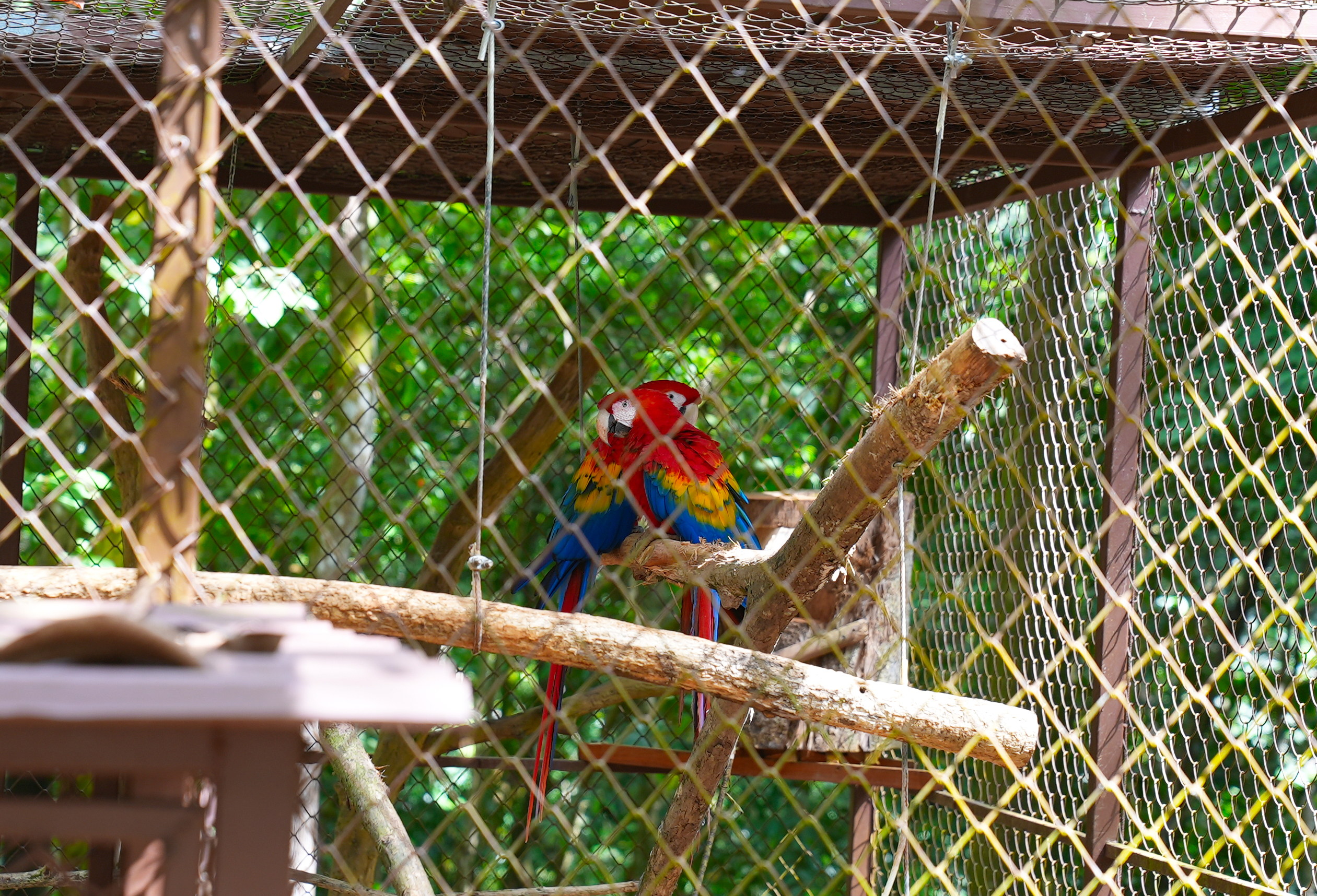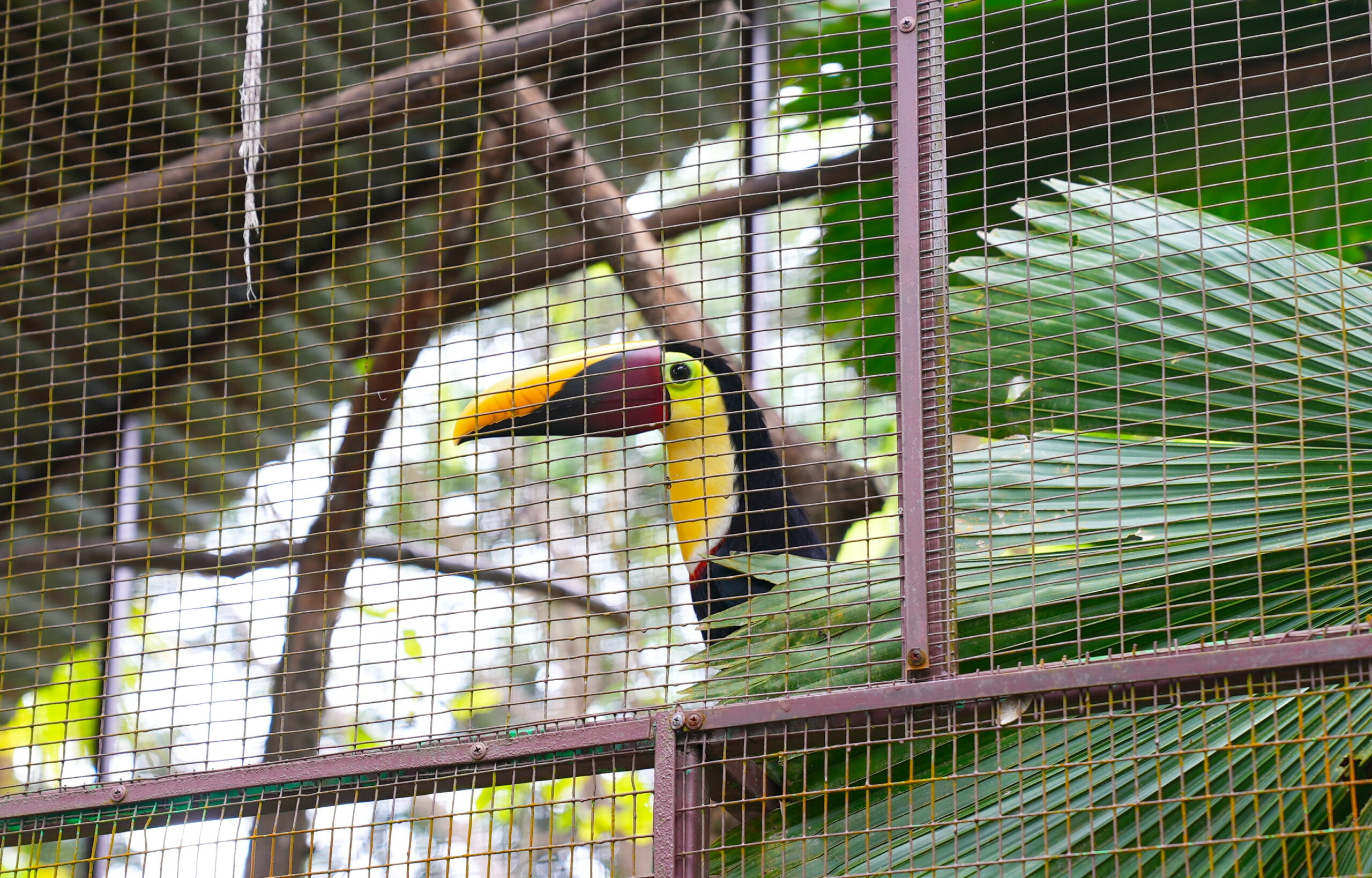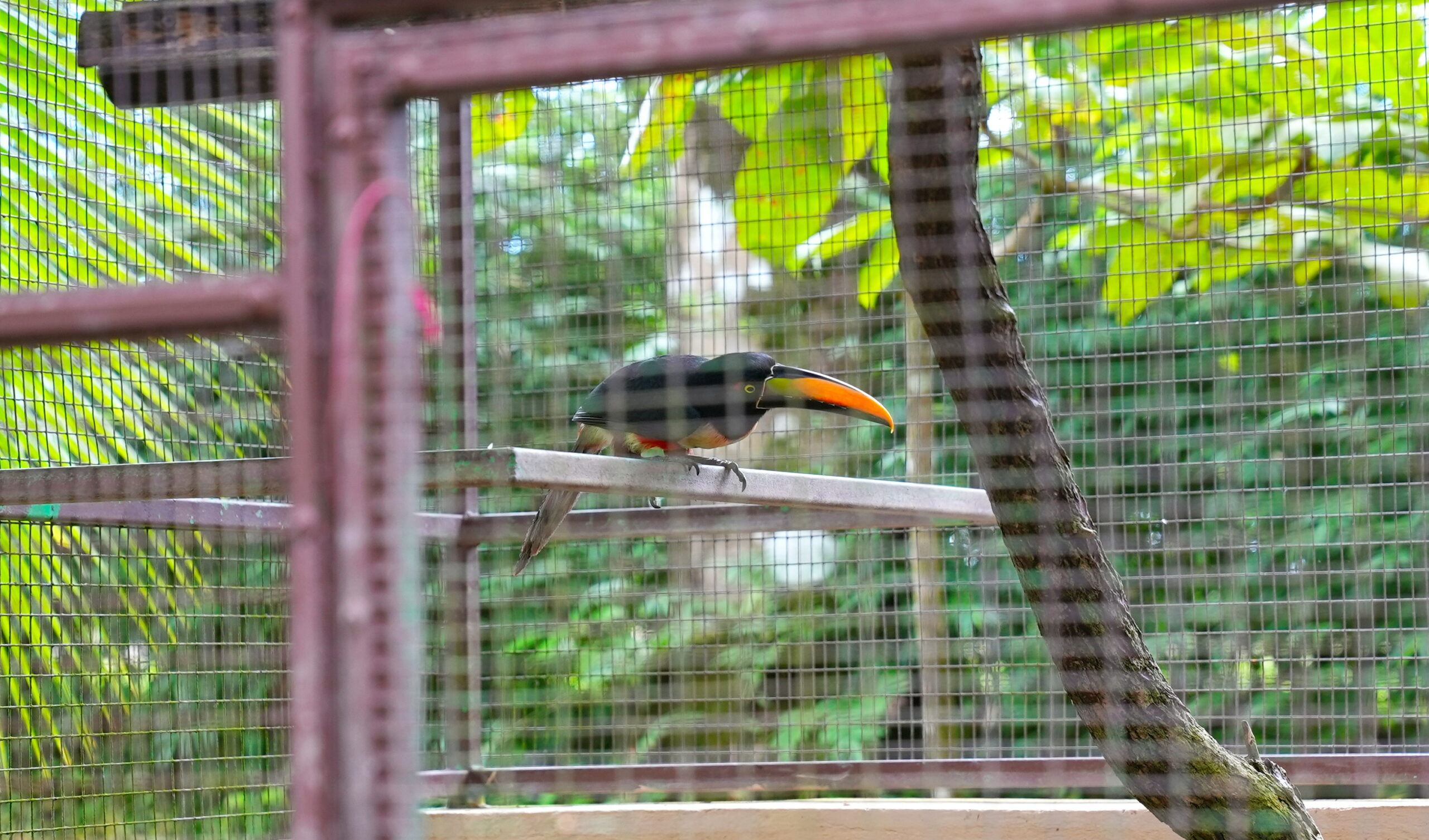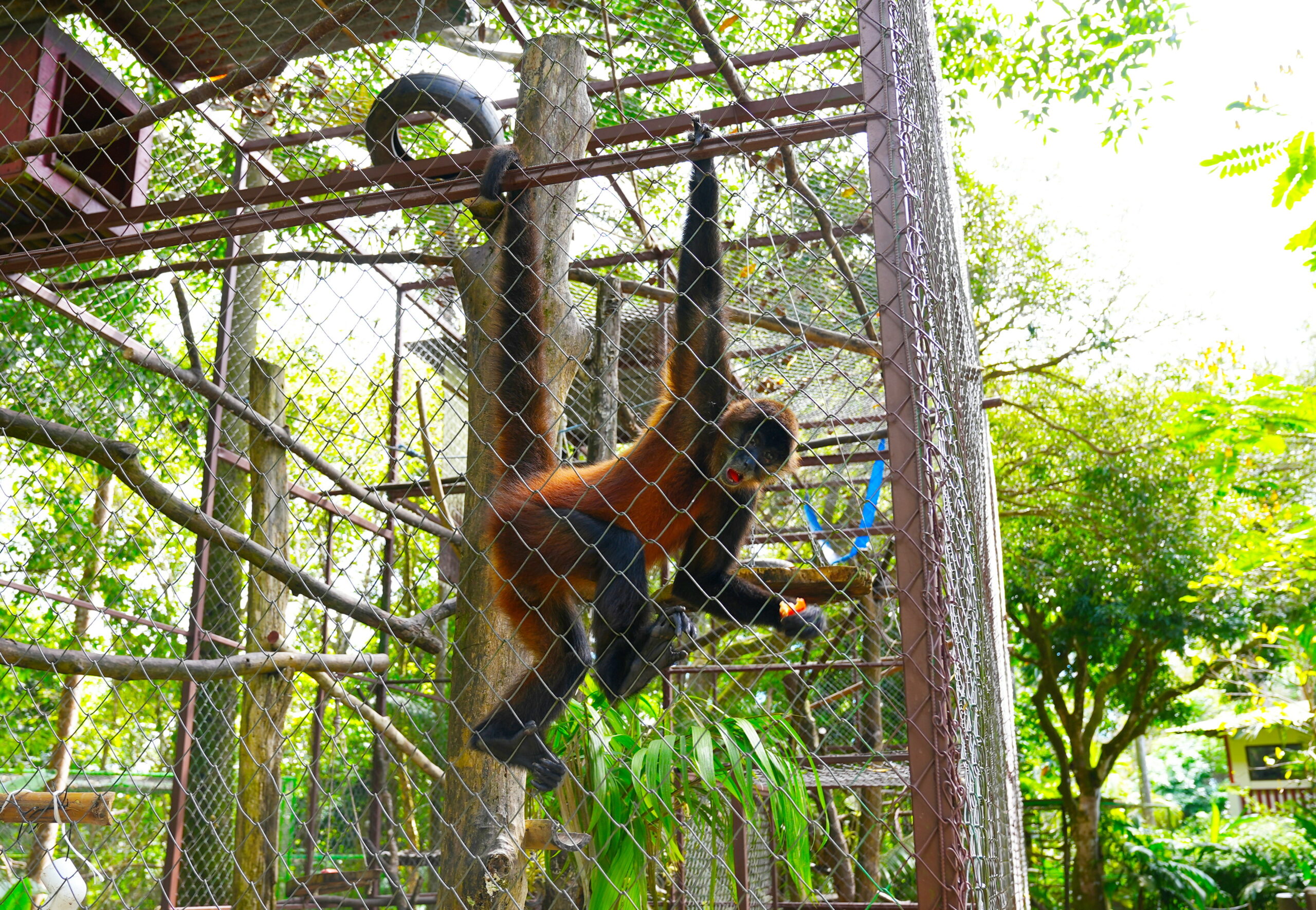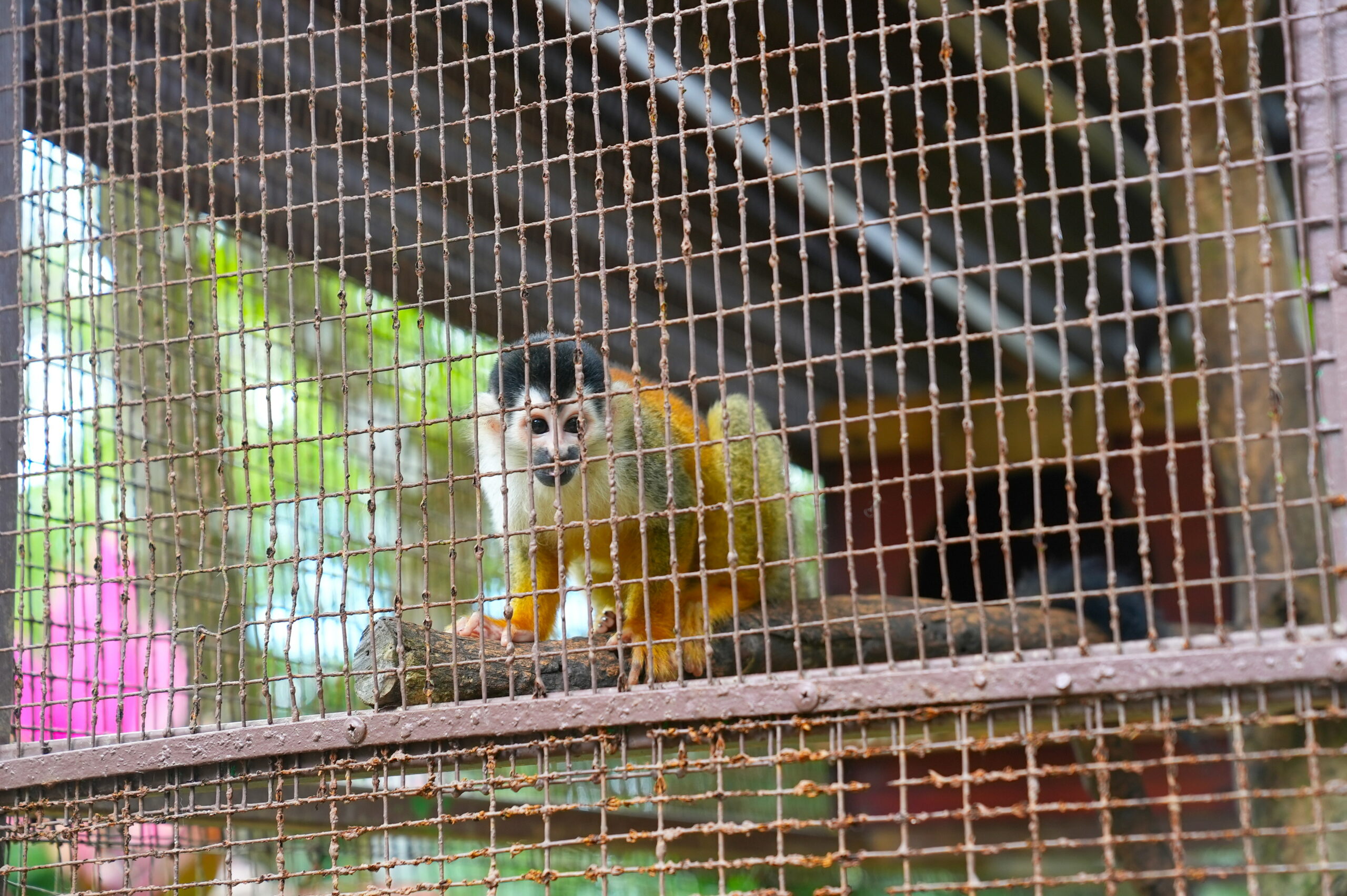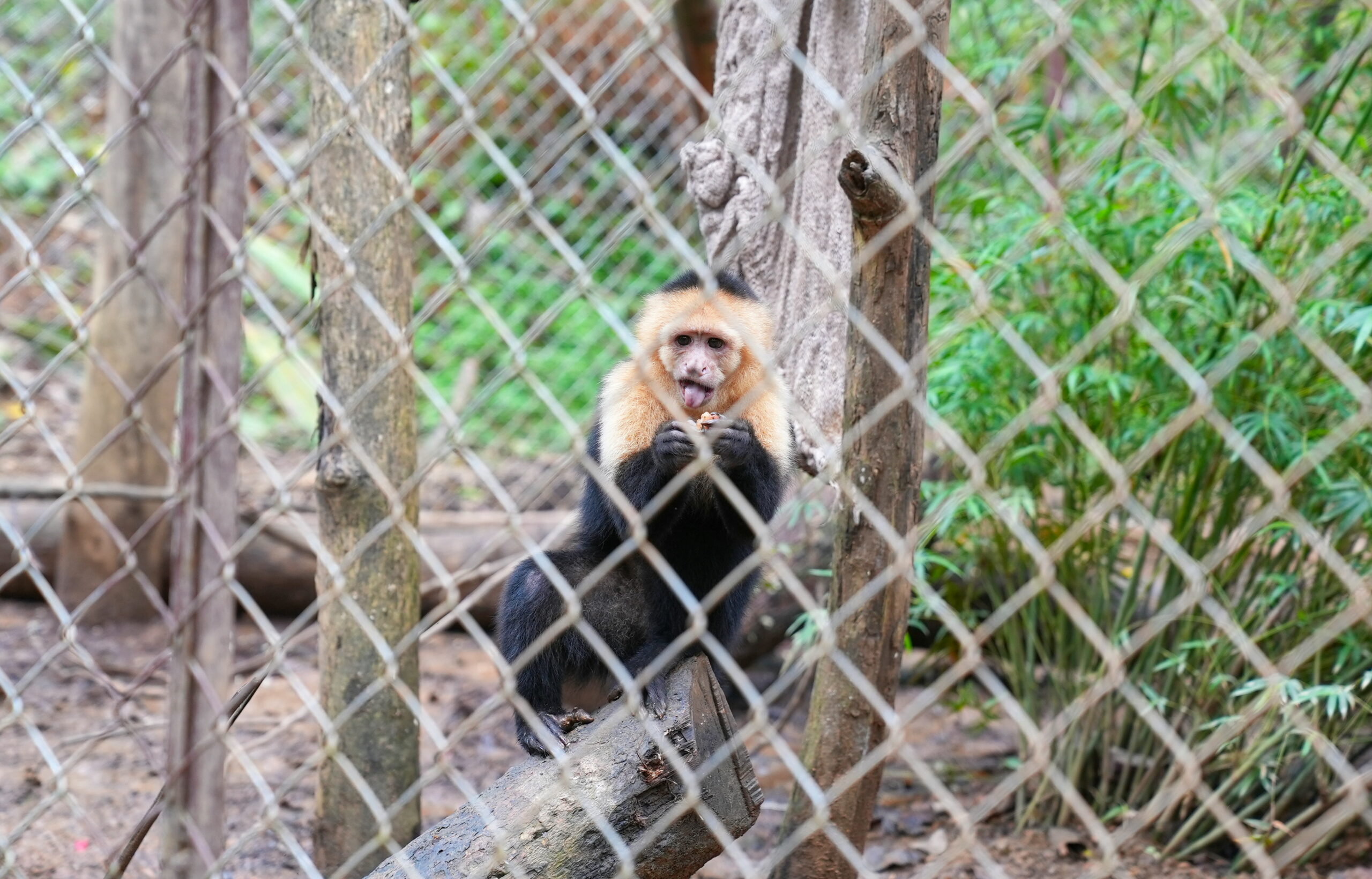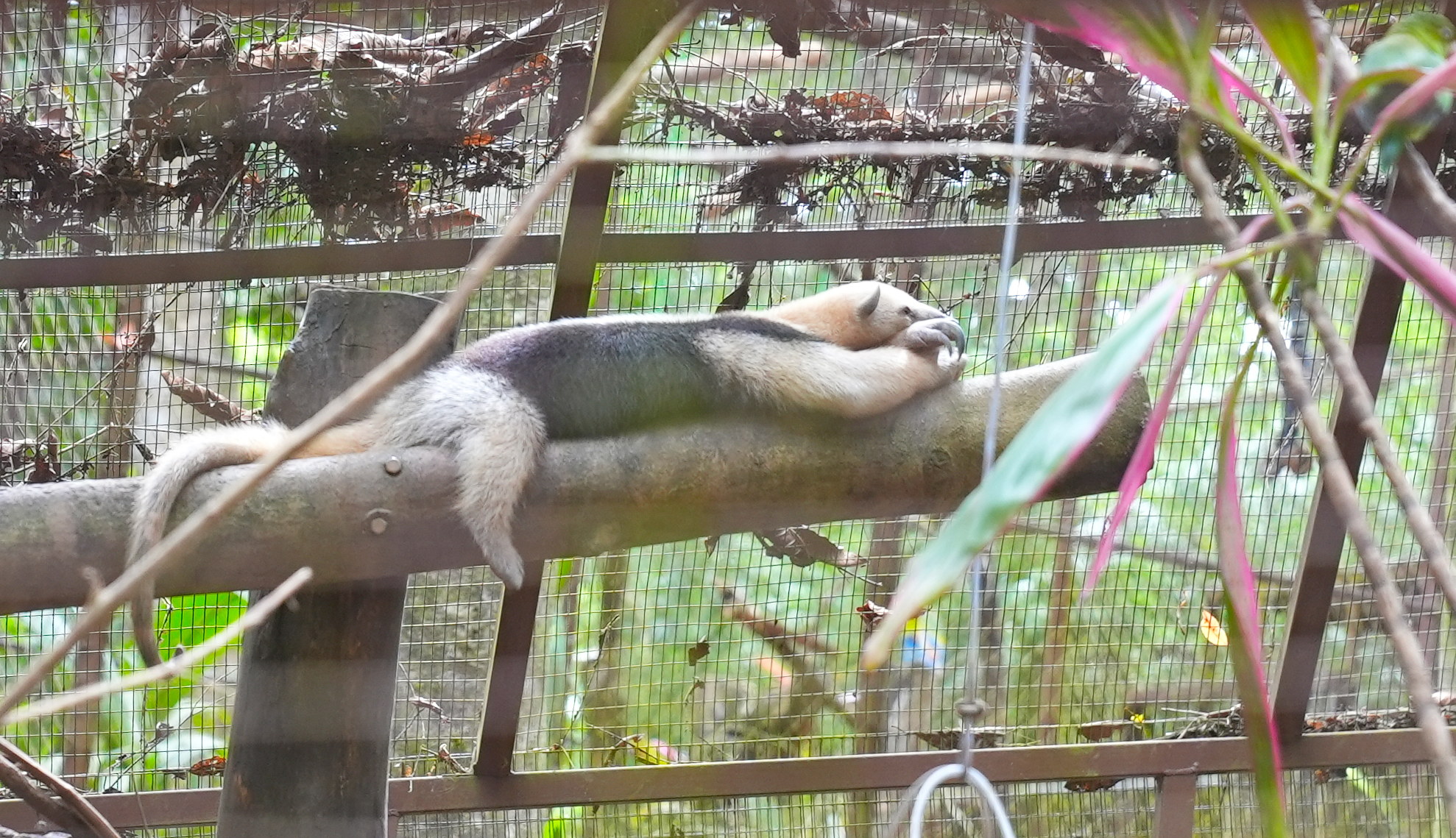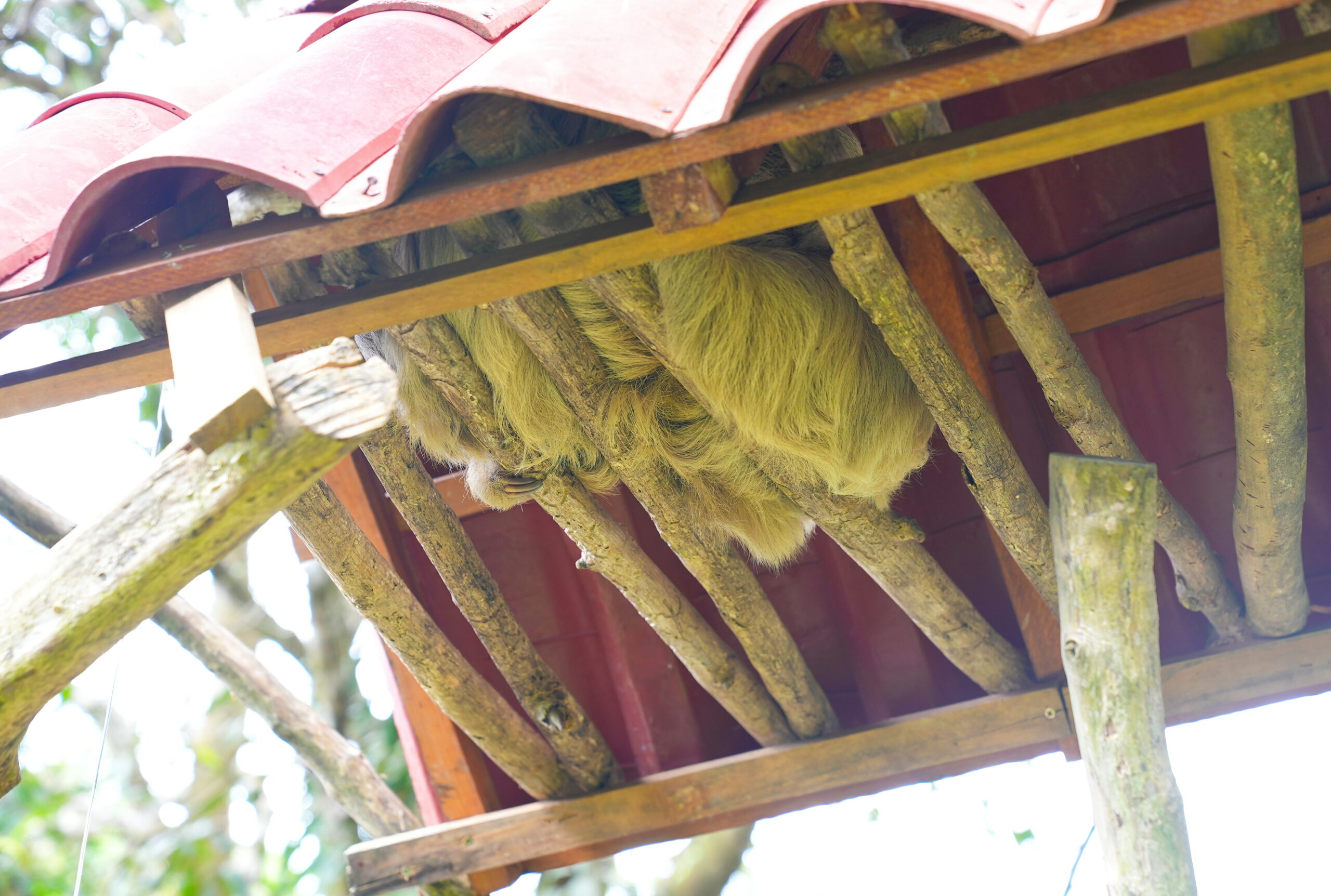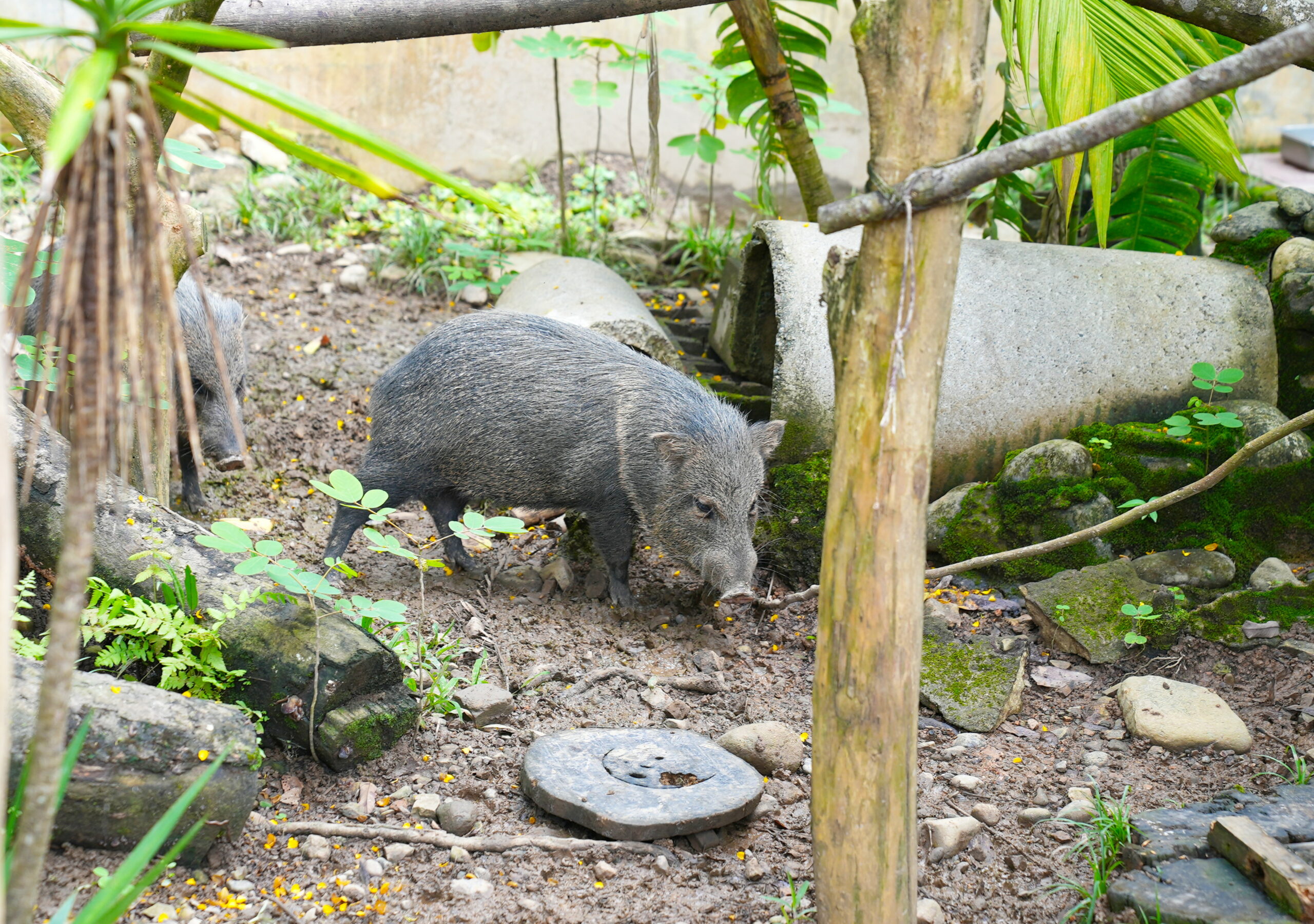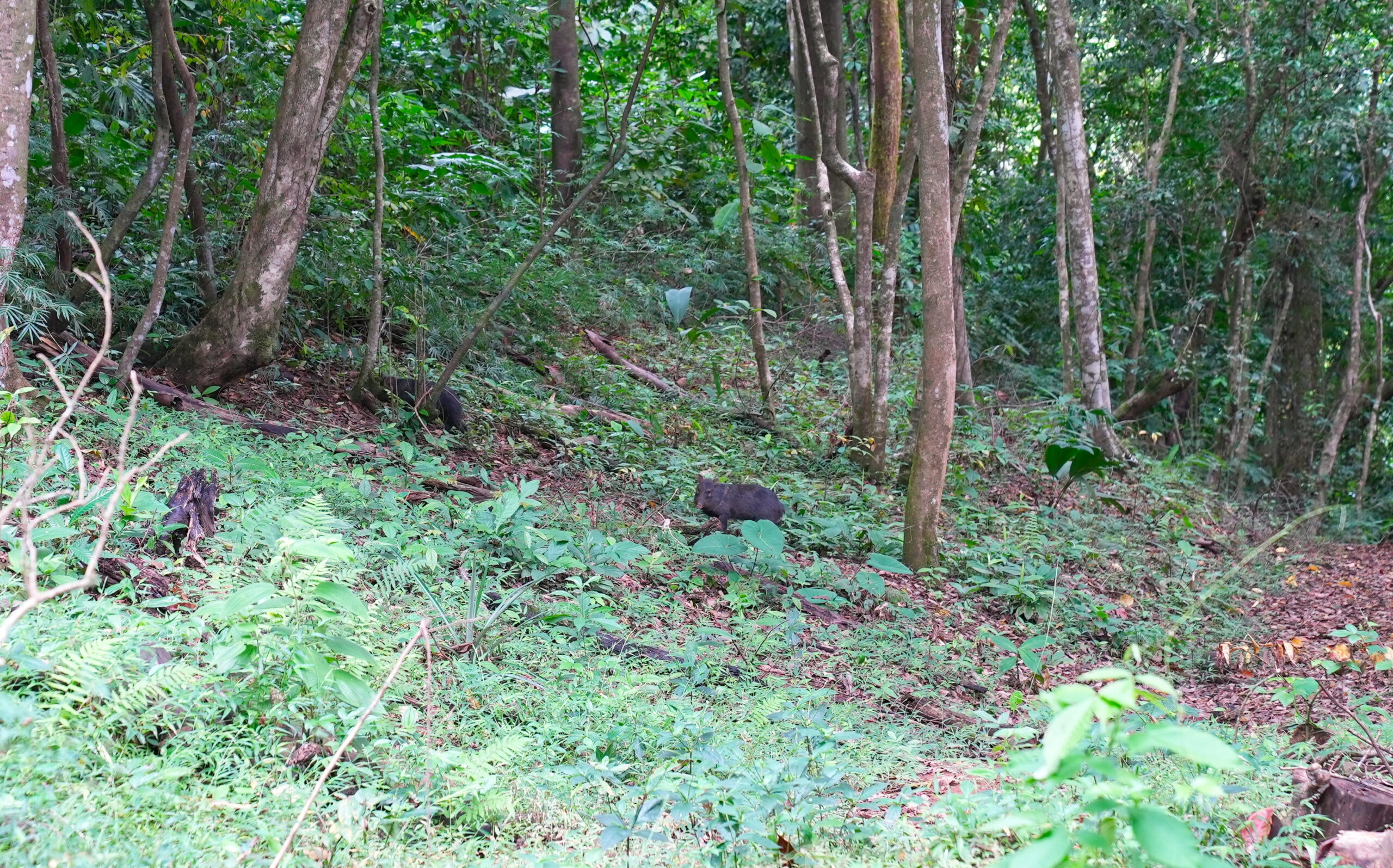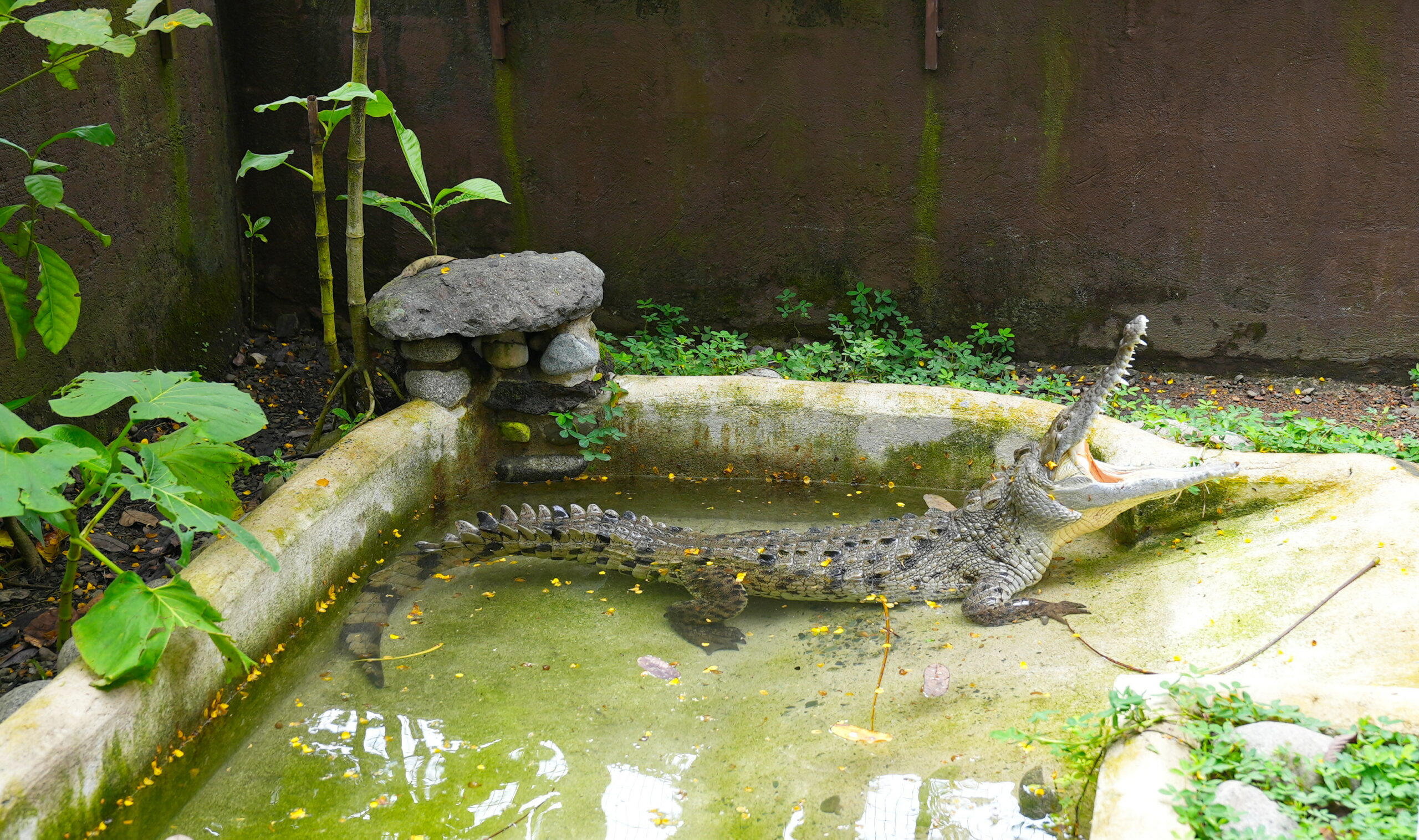We leave Jaco and drive two hours south on Ruta Nacional Primaria 34, to an Airbnb in the mountains above Dominicalito Beach, about three miles south of Dominical. As with all the Airbnbs we stay in here in Costa Rica, the road to the house is precarious and we are happy to have a 4-wheel drive vehicle, and the view is fabulous.
Yes, we are still in the rain forest. I think it would be easy to get lost here, if you went off the trail.
There is a book written in 1912 by Edgar Burroughs called Tarzan of the Apes. In the book, Tarzan might brachiate through the jungle, similar to a gibbon. A TV series running from 1966 to 1968 called Tarzan had Tarzan swinging through the trees on vines. Obviously, the show’s writers had never been to a jungle.
Almost in the center of this photograph is a mantled howler monkey. They are small compared to the volume of sound they produce. As in, when you hear them, you start looking for a 200 pound ape, not a 22 pound monkey.
This is what they sound like in the early morning. We recommend earphones and volume (but not too much).
But, it’s not all jungle here.
We hike a road/trail up the mountain and are rewarded with a view of the ocean.
We find this fellow on our screen, a humble member of Pentatomidea, aka stink bug. We do nothing to disturb it.
This slightly-blurry photograph shows Pionus senilis, the white-crowned parrot. Only about 24 cm in length, it is the rarest of the Pionus parrots.
This is a fine example of Ramphastos ambiguus, the yellow-throated toucan. It’s great when they name thinks what they look like. Anyway, this particular fellow is in the subspecies a. swainsonii, the chestnut-mandibled toucan; you can tell because the color around its eye is bright green. Its call is yo-YIP, a-yip, a-yip (not to be confused with yippee ki-yay), or a Dios te dé, Dios te dé, Spanish for “God give you…”).
Pozo Azul
Pozo Azul, or “blue well” in English, is a small green pool at the bottom of a small waterfall.
The waterfall is off the beaten path, which means that a lot of other people won’t be there, but it also means you might need a 4-wheel drive.
There is a small parking lot near the trail head, with this helpful sign.
A short hike down the trail, and here we are. I imagine, when it rains hard, that you could slide down this waterfall safely. Now, no way. But the water is refreshing and deep enough to swim.
There are perches where you can sit and enjoy the water hitting you. And, yes, the water is a bit…refreshing.
This isn’t us, but a local guy. He and his family come down the trail and he immediately goes to this rope (which we had not noticed), and does his Tarzan thing.
The Night Sky
We are not as high as when we were in Peru, but the night sky is clear, and we have a good camera.
Remember, almost every dot you see is not a star, but a galaxy containing about 100,000,000,000 stars. (They are smudged because the lens stays open for a few seconds to get enough light.)
Alturas Wildlife Sanctuary
Alturas Wildlife Sanctuary rescues, heals and rehabilitates as much wildlife as they can back into the wild. They take care of any and all animals that are injured.
We would rather see critters in their natural, wild habitat, but this gives us a chance to see them up close, and we are contributing to a good cause, so, let’s go see some critters.
Amazona auropalliata, the yellow-naped Amazon parrot, is here because the species is critically endangered. “They are hugely impacted by the illegal pet trade with 100% of their nests being raided to take the juveniles in some areas of their range.” Yeah, think about that when you want to buy a pet bird.
Amazona autumnalis, the red-lored parrot, gets by because they adapt well to human-altered habitat. They can live to be 80 years old. Note: The specific epithet autumnalis is Latin for “autumnal”, in case you were wondering.
Ara macao, also known as the scarlet macaw, is here because of the illegal pet trade where many of the young are poached directly from their nests. Habitat destruction also has a large impact on these macaws. These beautiful birds are also traded on the black market for their meat and feathers.
This particular yellow-throated toucan is here because it was confiscated from the pet trade. According to Alturas, “he was young when he first came to us, so we hoped that he might not have become imprinted on humans, but our attempts to release him have not been successful. He has decided for himself that he wants to be a permanent member of the sanctuary family.”
The fiery-billed aracari (Pteroglossus frantzii) is a near-passerine bird in the toucan family Ramphastidea. They are not endangered; Alturas does not tell us why this one is here.
Ateles geoffroyi is known as Geoffroy’s spider monkey, the black-handed spider monkey or the Central American spider monkey. It is one of the largest New World monkeys, often weighing as much as 9 kg. Its arms are significantly longer than its legs, and its prehensile tail can support the entire weight of the monkey and is used as an extra limb. Its hands have only a vestigial thumb, but long, strong, hook-like fingers. These adaptations allow the monkey to move by swinging by its arms beneath the tree branches. These fellows are endangered mostly due to habitat loss and capture for the pet trade. They require large tracts of primary forest to survive, so they are vulnerable to deforestation. Because of their low reproductive turnover, they cannot quickly replenish their numbers when affected by these events.
The squirrel monkey (Saimiri oerstedii), known as mono titi in Spanish, is here because—you guessed it—the pet trade. In 2012, Costa Rica passed a law that made it illegal to have Costa Rican wildlife as pets, which made the capture and sale of the Squirrel Monkey illegal. Their habitat has also been fractured by the planting of monoculture species, among other things, which means that it is challenging to achieve an adequate amount of genetic diversity. In addition, before hunting was made illegal in Costa Rica, also in 2012, Squirrel Monkeys were hunted for food and as crop pests.
The white-faced capuchin (Cebus imitator, which, according to Google translate, means “onion imitator”) is, surprise! endangerd becaue of pet trade. “All three of the White-faced Capuchin monkeys living out their lives at Alturas are female. All three were formerly pets, but each came from a very different background. While Honey lived with a family south of the sanctuary, Coco was kept on a leash and was being walked around the city streets of San Isidro. Pablo has the most unusual background, since she spent her life prior to Alturas as the pet of a drug cartel that was arrested at the Costa Rican border. Each has her own preferences and personalities.”
The two-toed sloth (in Spanish, perezoso de dos dedos), Choloepus hoffmanni, has, conveniently, two fingers on its front foot. In general, these fellows are not endangered, probably because they make poor pets. At Alturas, “two-toed sloths are the second most common animal to be brought to Alturas Wildlife Sanctuary. We receive many babies that are either rejected and abandoned by their mothers or wrongfully rescued by humans. We also receive numerous adults that are victims of electrocutions, car accidents, and dog attacks. We provide refuge to an adult female who has a paralyzed limb.”
The three-toed sloth, Bradypus variegatus, shares the name “sloth” but is in a different family (Bradypodidae) than the two-toed sloth (Choloepodidae). Personally, I can’t see much of a difference, except that this guy can give you “the finger”.
The collared peccary (Dicotyles tajacu) is a species of artiodactyl (even-toed) mammal in the family. They are commonly referred to as javelina, saíno, or báquiro, although these terms are also used to describe other species in the family. The species is also known as the musk hog. In Trinidad, it is colloquially known as quenk. They are not endangered, so we don’t know why they are here…or why there is a landmine in their pen.
While we are here, a group of un-caged peccaries pass by, noisily using their snouts to look for food in the groundcover.
Costa Rica is home to the spectacled caiman (Caiman crocodilus) and the American crocodile (Crocodylus acutus), which is not to be confused with the American alligator (Alligator mississippiensis). I don’t know what this caiman does all day, but relaxing with its mouth open is probably fairly productive.
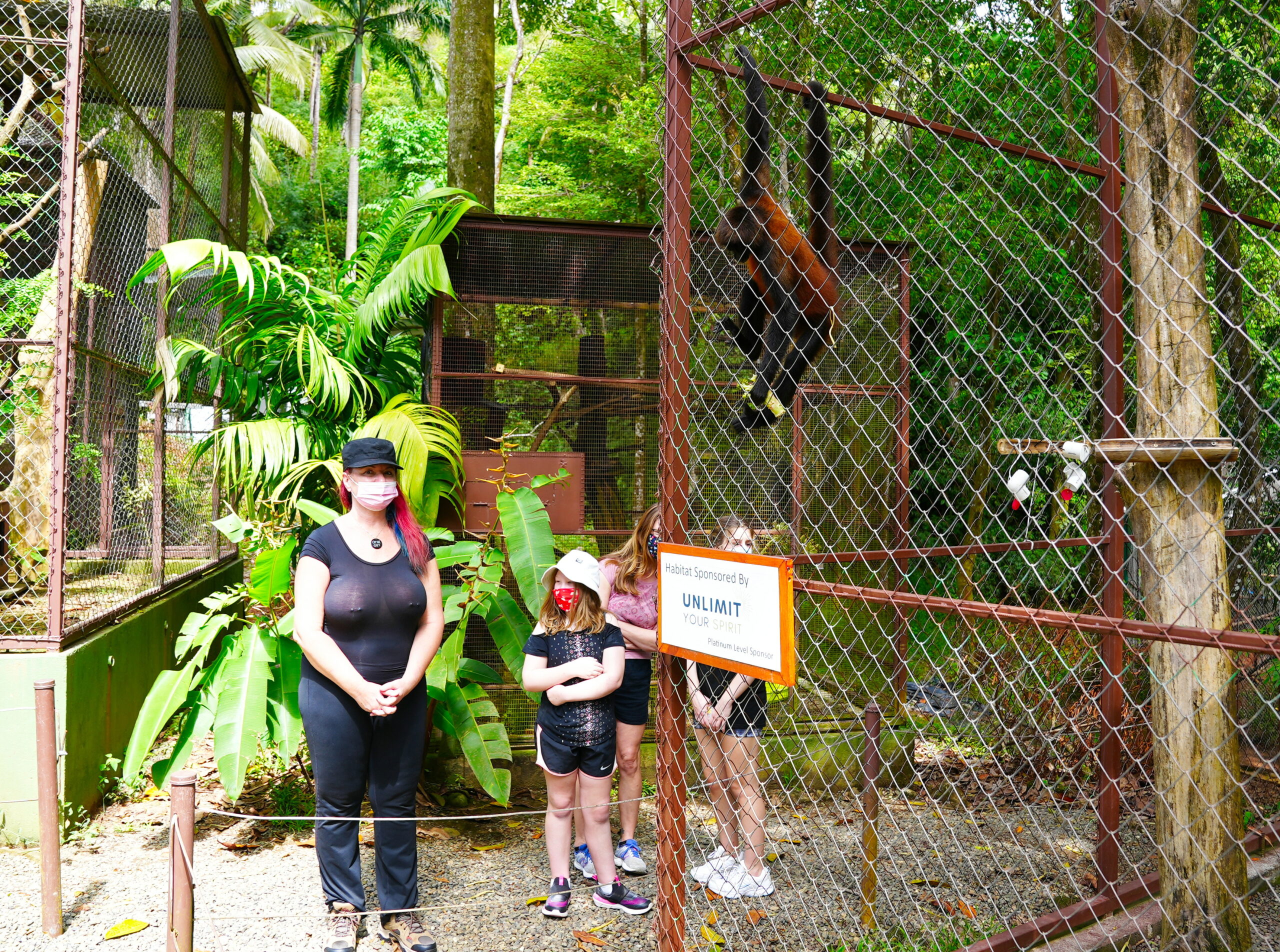
Yes, it’s during the Covid Panic. Outside the zoo part of the santuary, we do not need masks. Inside, we do, for reasons.
You can caption this photograph yourself. 🙂
Join us again next time as we explore Dominical Beach!!

